Today Micron made a slew of announcements around new SSDs, many of which we expected. The first is a confirmation that 3D NAND is arriving from Micron in client SSDs. The second is that Micron is launching new Enterprise NVMe SSDs. Third, 3D XPoint is coming out this year, with volume shipments in 2017 and 2018. Finally, Micron is moving up the stack from being a component supplier and is moving into selling pre-configured storage solutions with a variety of partners.
3D NAND Coming Soon to Client SSDs
The first announcement is that 3D NAND is coming from Micron. April is when we will see TLC 3D NAND based drives start to take over for low end SSD storage.
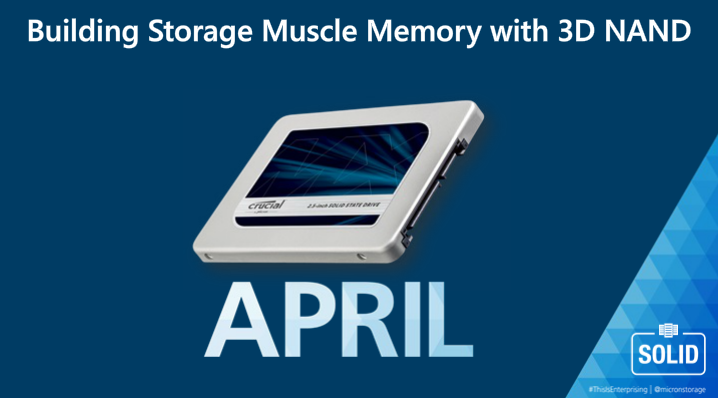
Micron also said it will announce M.2 and 2.5″ client/ OEM drives in June based on 3D NAND technology.
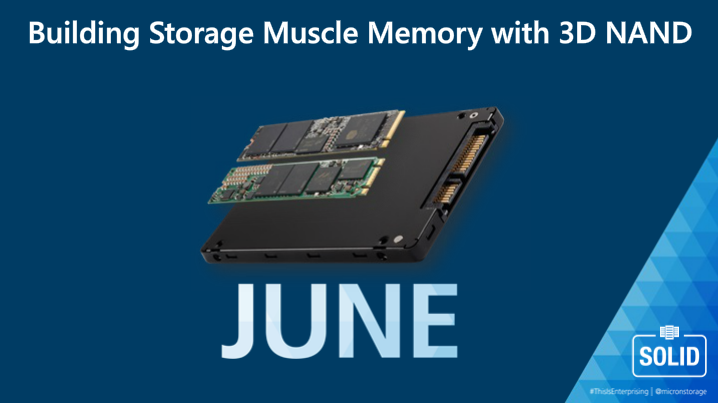
These announcements are continuing on product lines Micron has been engaged in for years.
New NVMe SSDs
Micron is announcing two new PCIe NVMe SSD lines based on 16nm MLC NAND, the Micron 9100 and Micron 7100 SSDs.
The Micron 9100 series is focused on traditional PCIe add-in card and 2.5″ PCIe applications. It comes in 800GB, 1.2TB, 1.6TB, 2.4TB and 3.2TB configurations and can offer up to 3GB/s sequential read, 2GB/s sequential write and 750k random read IOPS using a PMC-Sierra controller.
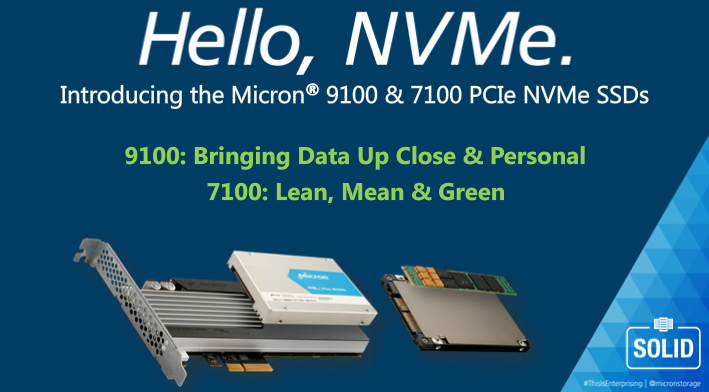
The Micron 7100 series is focused on providing lower power and latency in compact form factors. They are also focused on lower costs and utilize a Marvell 88SS1093 controller. These are focused on hyper-scale style deployments where being able to use a greater number of lower cost lower power drives is important. These drives will have M.2 and 2.5″ PCIe form factors. They will come in 400GB, 480GB, 800GB and 960GB sizes in both form factors. The 1.6TB and 1.92TB sizes are only available in the 2.5″ form factor. These are much lower performing drives with random read IOPS in the 180k to 235k range and random write IOPS in the 10k to 40k range.
While these are still MLC soltions, Micron did say that enterprise 3D NAND solutions are coming in a few months:
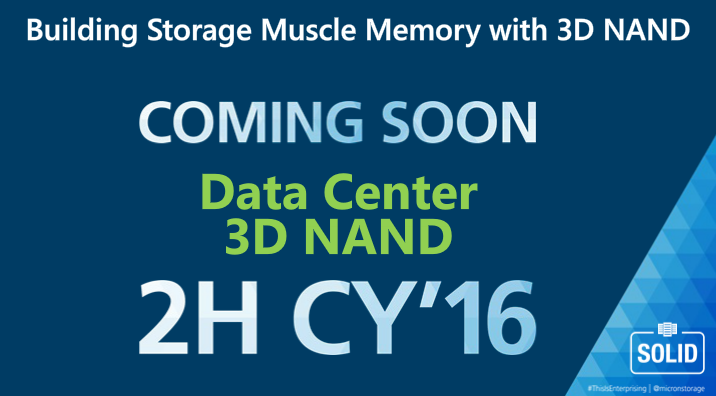
We saw Intel already launched the 3D NAND DC P3320 and DC P3520 solutions in March so we expect this industry trend to continue.
3D XPoint Solutions
Micron first showed off a 3D XPoint wafer to demonstrate the technology is coming. We would not be surprised if Micron is already shipping 3D XPoint to the big web scale companies.
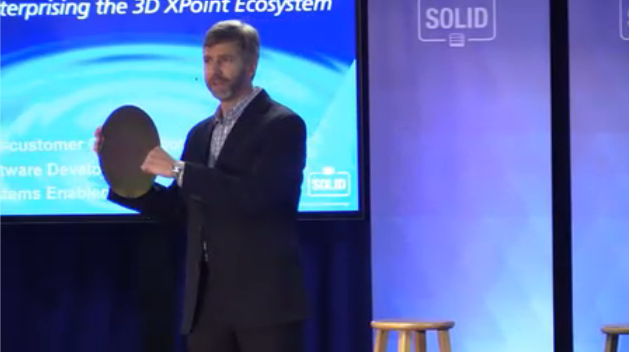
The company also reiterates we will see 3D XPoint this year and will see Micron “hit scale” with the technology in 2017 and 2018.
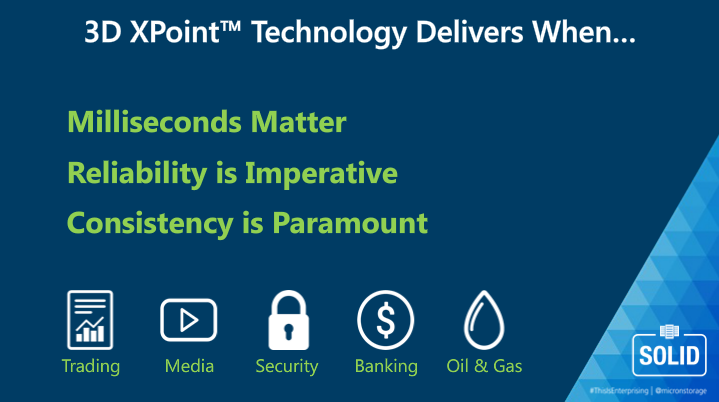
There was little new in the Micron event today on 3D XPoint but we continue to hear a similar schedule.
Micron Branded Solutions
Micron also announced three new Micron branded solutions for VMware vSAN, Ceph and Nexenta. These are pre-configured storage appliances with Micron storage. It is an interesting move since Micron has primarily been a parts supplier. Seeing Micron move more towards systems means they are trying to move up the stack much as we saw NVIDIA do with their new DGX-1 appliance.
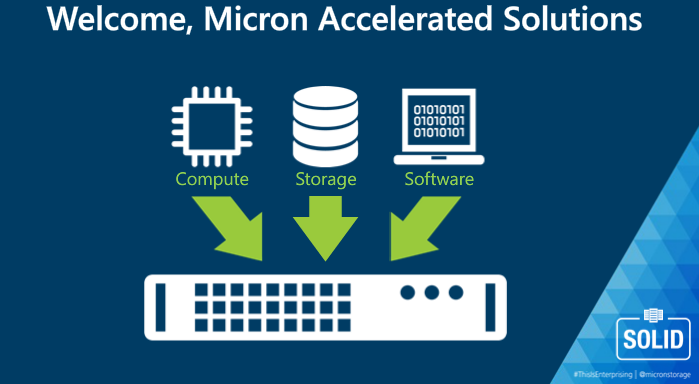
The first box is a VMware vSAN machines with all-flash nodes and pricing as low as $0.44/GB.
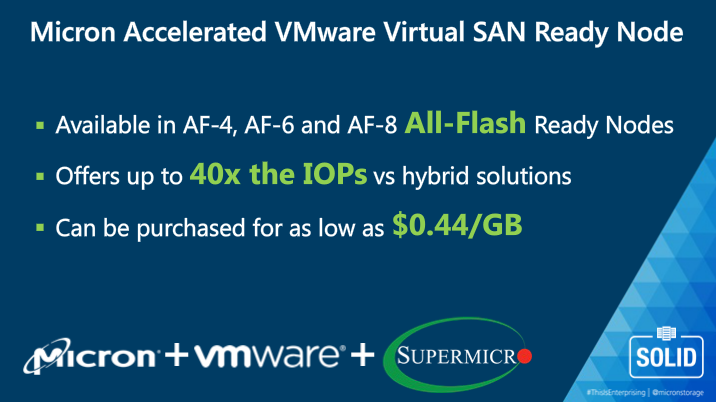
The second solution is a Ceph solution for those looking at scale-out (and lower cost) shared storage.
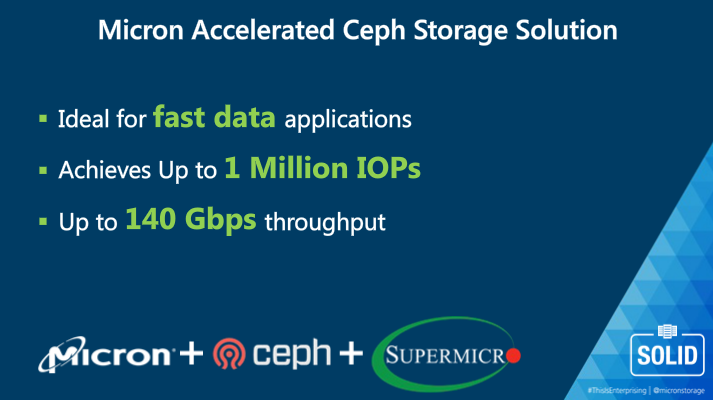
Finally, coming later this year Micron and Nexenta will team up for a new appliance.
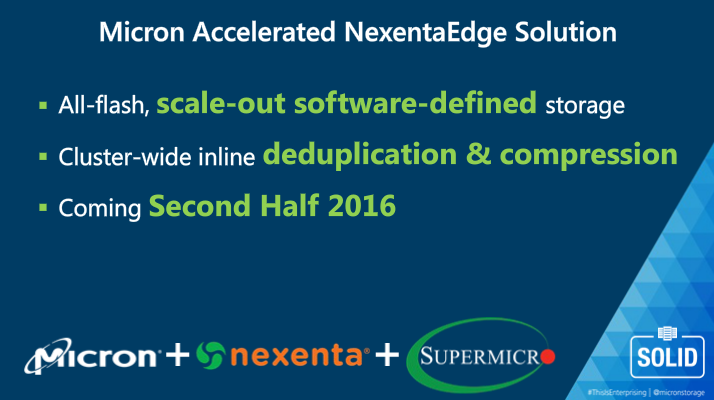
All of these solutions use Supermicro as the system hardware provider which is fairly standard for software defined storage players to use given Supermicro’s storage portfolio.
Final thoughts
Overall, Micron is trying to transition itself from a components supplier up the stack to bigger assemblies. The first step was really moving from components like raw DRAM and NAND and into solid state drives. The next step seems to be teaming with software providers and bringing boxes to market that compete with some traditional storage providers (e.g. EMC and NetApp.) For anyone who witnessed the Micron event, this was very clearly messaged as the key growth direction moving forward.




